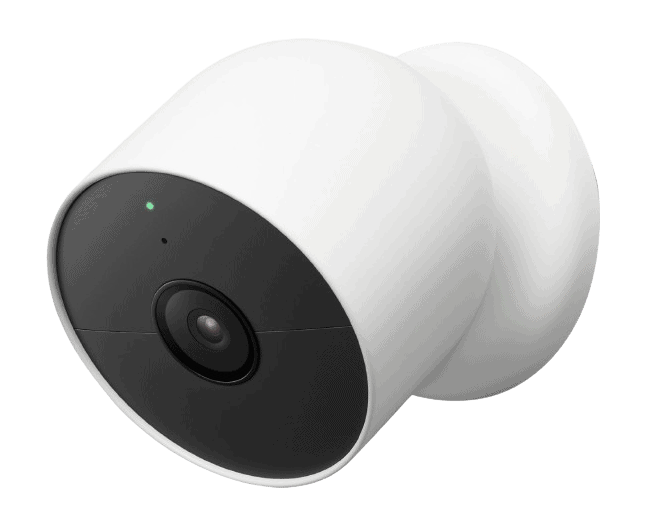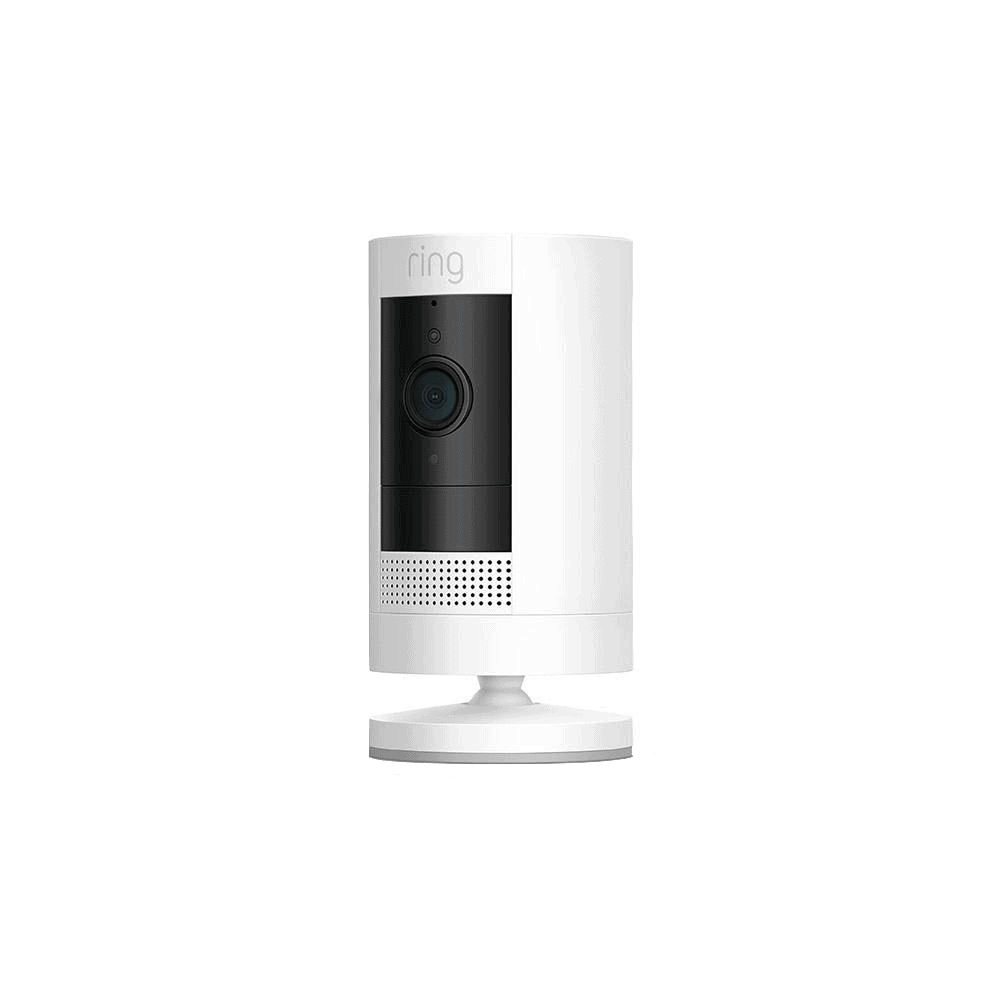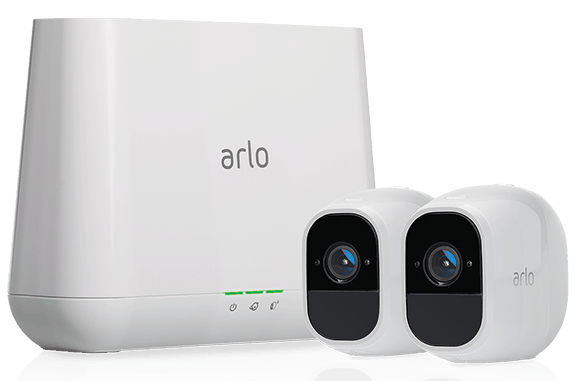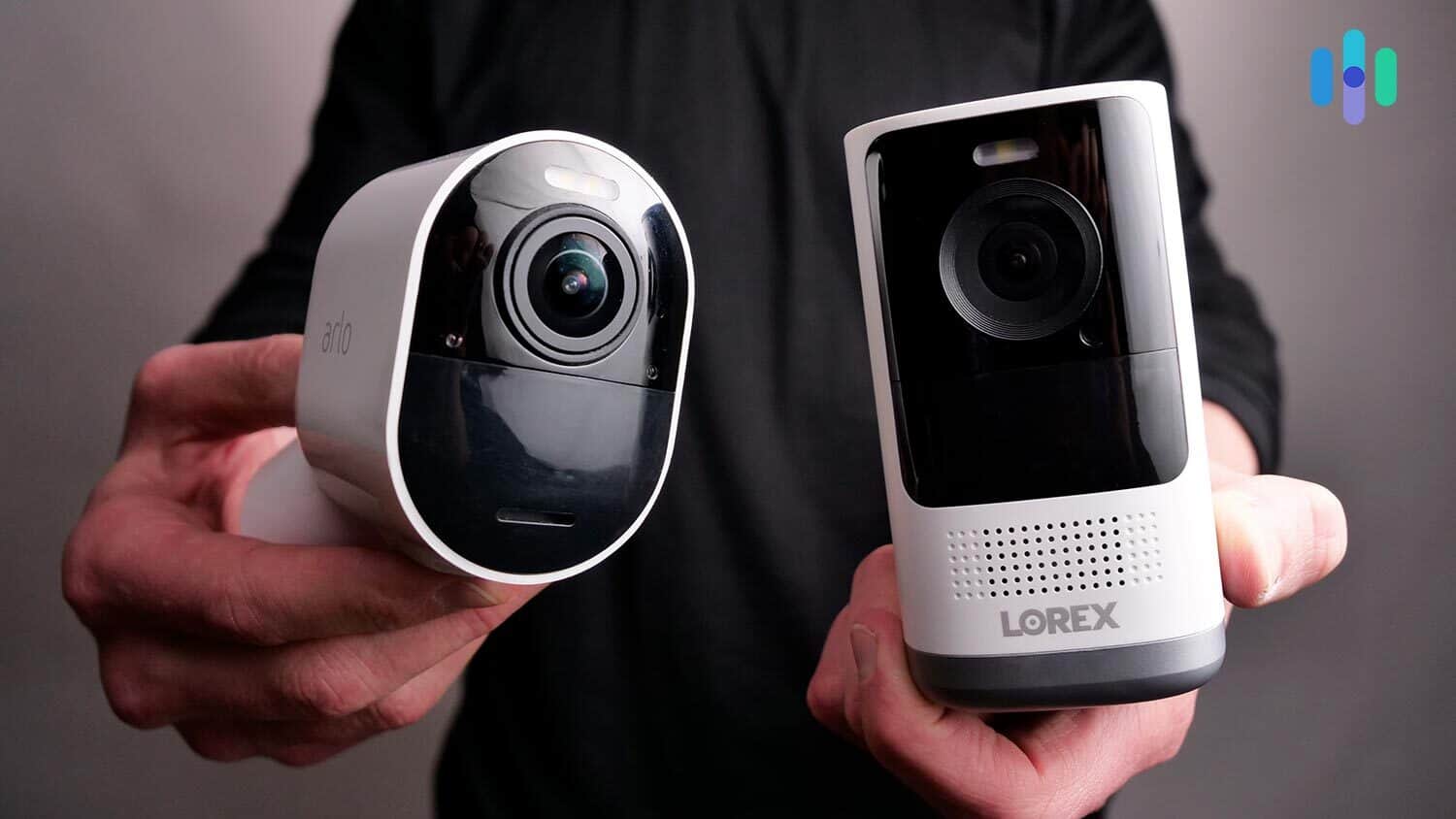Best Solar-Powered Security Cameras
ADT’s Google Nest Cam 360-degree solar panels allow you to position them in any direction so your security cameras are always fully charged.

- Connects magnetically, but also comes with screws and wall anchors if required.
- Trickle charges the Google Nest Cam (battery) to keep it running longer.
- Available for sale on the Google Store with discounts available for Google One members.
- Connects magnetically, but also comes with screws and wall anchors if required.
- Trickle charges the Google Nest Cam (battery) to keep it running longer.
- Available for sale on the Google Store with discounts available for Google One members.

- Allows you to reduce your carbon footprint while improving your security
- With no wiring to worry about, system is easily scalable
- Available stickup cameras let you reposition equipment effortlessly
- Allows you to reduce your carbon footprint while improving your security
- With no wiring to worry about, system is easily scalable
- Available stickup cameras let you reposition equipment effortlessly

- Saves money on powering your cameras
- With no need for power outlets, install your cameras anywhere
- Solar-powered camera models are 100 percent wire-free
- Saves money on powering your cameras
- With no need for power outlets, install your cameras anywhere
- Solar-powered camera models are 100 percent wire-free
Editor’s Note: While solar-powered cameras can deter crime, we highly recommend checking out the best outdoor security systems for whole-home protection. Top brands like SimpliSafe currently have 20 percent off any new system and are also throwing in a free indoor camera.
You do what you can to help the planet. You recycle, telecommute when you can, and conserve water. While that’s already more than most, you can take it a step further with your security cameras too. Nowadays, most of the best home security systems offer solar-powered versions of their best security cameras. But, not all of them do.
So, who has the best solar-powered security cameras? We’ve taken the time and energy (no pun intended) to answer that question for you. Whether you’re most interested in cool features or affordability, we’re confident you’ll find what you’re looking for somewhere on this list. Let’s get to it.
Disclaimer: Take note though that even the best indoor security cameras won’t be able to support solar power unless you use some complicated cabling for a solar panel outside. That means we’ll only be looking at the best outdoor security cameras today.
Comparison of the Best Solar Security Cameras
| System |
ADT


|
Ring


|
Arlo


|
Lorex


|
|---|---|---|---|---|
| Ranking | 1st | 2nd | 3rd | 4th |
| Ratings | 9.8/10 | 9.5/10 | 8.8/10 | 9.0/10 |
| Monitoring options | Professional or DIY | DIY | Professional or DIY | DIY |
| Storage options | Cloud | Cloud | Cloud or USB device | DVR/NVR or microSD card |
| Night vision | Infrared | Infrared and color | Infrared and color | Color |
| Artificial intelligence | Person detection and facial recognition | Person detection with Ring Protect | Person detection with Arlo Smart | Person detection |
| Smart platform integration | Alexa and Google Home | Alexa and Google Home | Alexa, Google Home, Apple HomeKit | Alexa and Google Home |
| Read Review | ADT Review | Ring Review | Arlo Review | Lorex Review |
A Detailed Look at the Top Solar-Powered Cameras
-
1. ADT - Best Professionally Monitored Solar-Powered Security Cameras
Product Specs
Resolution Up to 1080p Field of View Up to 128° Power Wired, battery Connectivity Wi-Fi, ethernet Video Storage Cloud Smart Platform Compatibility Alexa and Google Home Installing the Nest Cam Google Nest Cams are available as standalone products, but they work even better as part of an ADT security system. One of three cameras available are battery-powered, and it’s also the one you can power using a solar panel (available from the Google Store) that can rotate 360 degrees so you can choose the perfect spot to get the most sunlight. The solar panel trickle charges the Nest Cam (battery) to extend its battery life.
Why Choose ADT: Nest Cams unlock exclusive features like using facial recognition to disarm the system and unlock the door when regular visitors stop by, thanks to ADT. You can also manage Nest Cams and the rest of your ADT system with the ADT+ app.
What We Like
- DIY and professional installation available
- 1080p resolution and 130-degree field of view
- Battery life up to seven months
- Sends personalized notifications for people, animals, and cars
What We Don’t Like
- Weather resistant but not waterproof
- Solar panels only available on Google Store
- Video support is only available on ADT’s most expensive professional monitoring plan
- No internal storage options
AI Features
The Nest Cams we’ve reviewed know the difference between people, animals, and vehicles, and send personalized messages when one is identified. We customized these notifications to avoid battery drain and minimize false alarms. You can also set up zones to focus on, such as your front yard, and areas to ignore, like the sidewalk or road.
FYI: You can set up activity zones inside the ADT+ app. You don’t need a separate app for Google Nest devices and ADT equipment.
When you combine this technology with an ADT monitoring plan, you unlock Trusted Neighbor. It uses the Nest Cam’s facial recognition to identify regular visitors and let you determine who to trust. You can then program Trusted Neighbor to unlock ADT’s smart lock and disarm the system automatically for them when the right conditions are met (e.g., time of day, system actions, etc.).
>> Learn More: ADT 2025 Review
Award-Winning Professional Monitoring
The fact alone that professional monitoring is available makes ADT stand out, because most security cameras don’t work with professional monitoring. For another thing, ADT has 12 centers across the country to ensure support is available 24/7. That makes ADT stand out compared to other security brands that offer monitoring.
You’ll also get cloud storage for videos and video verification for your security cameras, which can speed up emergency responses. The downside is that there’s only one plan for security camera support. It’s the most expensive one starting at $39.99 but can range up to $49.99 per month.
Crystal Clear Night Vision
The solar panel keeps the camera charged during the day, but that doesn’t mean the Nest Cam from ADT is useless at night. The Nest Cam (battery) has an up to seven-month battery life, so no sunlight overnight is no problem. In fact, the Nest Cam is one of the best night vision cameras. It has six infrared LED sensors so you can see up to 20 feet in the dark. We had no trouble making out smaller details, despite the footage being in black and white. If you’re after a camera with color night vision, check out our next pick, Ring.
-
2. Ring - Best Self-Monitored Solar-Powered Security Cameras

Product Specs
Resolution Up to 1080p Field of View Up to 155° Power Wired, battery, PoE, solar Connectivity Wi-Fi, ethernet Video Storage Cloud Smart Platform Compatibility Alexa and Google Home 
Ring began as a video doorbell company. Since Amazon purchased it in 2018, however, it has developed a strong reputation for all its security equipment, from motion detectors to contact sensors. Ring offers two models of solar-powered camera: the Spotlight Cam Solar and the Stick Up Cam Solar. Both let you keep track of what’s going on around your property without plugging them into an outlet.
Want to know more about Ring security equipment? Check out our page on Ring pricing.
What We Like
- Easy DIY installation
- Crisp, clear HD video with 1080p resolution
- Integration with both Alexa and Google Home
- Two-way audio with noise cancellation
What We Don’t Like
- Upper-end equipment is pricey
- No storage without a subscription
- No IP rating
- Limited field of view
Crystal-Clear Video
The most important component of any security camera is its ability to record clear images. All Ring cameras feature industry-standard 1080p HD resolution. That’s 2 million pixels to help you identify anything that happens to pass in front of your camera. But, they don’t have any 4K cameras which keeps them off our list of the best 4K security cameras currently available.
Both of Ring’s solar-powered cameras feature at least a 130-degree field of view. Wide angles mean you don’t have to install as many cameras to get the coverage you need. Both cameras also provide excellent night vision. The Spotlight Cam Solar features infrared night vision, while the Stick Up Cam Solar offers color night vision.
Two-Way Audio
Two-way audio is one of the most valuable features of any security camera. It’s one thing to be able to see who shows up on your front lawn, but it’s another to be able to talk to them. We’re fans of Ring’s two-way audio because it offers echo and distortion reduction, which means we don’t have to strain to hear what delivery people are saying when they’re dropping off packages.
Smart Home Capabilities
Of course, a camera-system company owned by Amazon is going to be fully compatible with Alexa. That means you can control everything with just your voice, including turning the system on and off and changing settings. Since it’s owned by Amazon, it shouldn’t surprise you that it made our list of the best Alexa-compatible home security systems. You may be surprised to learn that Ring’s two solar-powered models work seamlessly with Google Assistant as well. Whether you prefer to say “Alexa” or “Hey Google,” you get the same great results.
-
3. Arlo - Best Wire-Free Solar-Powered Security Cameras
 View Packages Links to Arlo
View Packages Links to ArloProduct Specs
Resolution Up to 4K HD Field of View Up to 180° Power Wired, battery, solar, PoE Connectivity Wi-Fi, ethernet Video Storage Cloud Smart Platform Compatibility Alexa and Google Home 
Arlo offers the same solid features as most other security camera manufacturers, such as minimum 1080p HD resolution and two-way audio. Arlo specializes, however, in providing special services you can’t find with many other companies. But, that means Arlo’s security camera prices can get a bit high. Maybe you’re looking for security cameras that work with Apple. Maybe you need 4K resolution. Maybe you prefer wire-free camera models. Arlo has you covered.
What We Like
- Works not only with Alexa and Google Home, but also with Apple HomeKit and IFTTT
- Wire-free cameras available
- Video resolution up to 4K
- One charger works with several camera models
What We Don’t Like
- Arlo doesn’t sell security equipment other than cameras
- Relatively expensive equipment
- Person detection requires paid subscription
- All cameras require additional hub purchase
Totally Wire-Free
If you’re going to choose solar-powered cameras, then you might as well take the next step and select wire-free cameras. Arlo solar-powered cameras don’t require cords for charging or for viewing or recording footage. Camera feeds go through a central hub, which connects to both cloud storage and your mobile device. Wire-free means you never have to worry about where you put your cameras or how the wires look with your decor.
Definitions: Even if it’s not the best wireless home security camera, it still won’t require a cord to connect the camera to a router or storage device, but they still require a cord to receive power. Wire-free cameras don’t need cords for either function.
Apple HomeKit Compatibility
If you’re an Apple user, then you know the value of Apple’s products. It’s not always easy to find technology that’s compatible with the Apple ecosystem though. Most home security companies, for instance, work only with Alexa or Google Home. That’s not true of Arlo. Arlo works directly with Apple HomeKit — no need to use a bridge — so you can use Siri to control all your devices, including your solar-powered cameras. With just your voice, you can turn the system off and on, pull up footage, and even talk to visitors through your camera’s two-way audio.
4K Resolution
It’s great to have 1080p HD resolution. Two million pixels create crystal-clear video feeds. But 4K is even better. Arlo’s 4K cameras use a total of 8 million pixels, which is four times the image quality of 1080p HD. With that kind of clarity, we were almost able to read the name on our neighbor’s dog collar when he came over to visit. That could come in handy for shooing him away from sniffing around our HelloFresh delivery.
-
4. Lorex - Best Solar-Powered Security Camera Options
 View Packages Links to Lorex
View Packages Links to LorexProduct Specs
Resolution Up to 4K HD Field of View Up to 180° Power Wired, battery, PoE Connectivity Wi-Fi, ethernet Video Storage Cloud, Local Smart Platform Compatibility Alexa and Google Home 
“Choice” is the name of the game with Lorex. No matter what you’re looking for in a security camera, you can count on Lorex to have it and that means you that means the pricing of Lorex cameras varies a lot too. The company offers tons of models, and each one has its own set of features. You get to decide on the particular blend of resolution, motion detection, and storage options that suit your needs.
What We Like
- DIY monitoring options
- Lots of camera models
- Person detection
- Color night vision
What We Don’t Like
- No professional installation
- Limited customer-service options
- Relatively expensive equipment
- No professional monitoring
Several Models
As you may expect, Lorex doesn’t offer only one solar-powered option — Lorex offers several. After all, this is the company that manufactures more camera models than any other, from indoor and outdoor cameras to bullet and pan-and-tilt styles. To make things simpler, Lorex doesn’t sell solar-powered cameras; it sells charging panels. They work on all of the company’s battery-powered options, including U424AA, U222AA, LWB6850, and LWB4850. We know, those model numbers are pretty confusing. That’s why we answer all of the FAQs about Lorex’s home security cameras to help you better understand its products.
Person Detection
Lorex also offers multiple motion-detection options similar to Nest Cams. You can purchase cameras with standard motion detection to catch any and all movement, or choose passive infrared detection if you prefer getting notifications based on heat signatures. The Lorex Advanced Motion Detection system detects only people and vehicles. Smart Motion Detection can distinguish between people and vehicles, while Smart Motion Plus alerts you only when it sees a face. Bottom line: You get to choose exactly when and how you get alerts from your security system.
Local Storage
If you prefer to self-monitor your security system, then you aren’t going to do better than Lorex. Lorex not only sends you alerts and lets you view live, real-time footage, but you can also record, store, and review footage. Every camera comes with a local storage option. Once again, though, you have choices. You can go with a DVR/NVR system with up to three terabytes of memory, or you can go wire-free with cameras that come with on-board microSD card ports. That’s what lets its security cameras work without Wi-Fi. Cards come with up to 256 GB of memory.
Overall, Lorex is our top pick for solar-powered security cameras.
Methodology
We never publish a list like this without doing our homework first. We want to know what every camera out there can do and how they all compare to one another. What do we look for? A whole range of features, including price, image quality, recording options, installation, durability, monitoring choices, and extras. Find out more about what we look for in each category below, or take a look at our guide to choosing a security camera.
Solar-Powered Capabilities
Our first consideration for this list was whether a company actually offers a solar-powered model. Not everyone does. In fact, some of the cameras on our list include built-in solar panels, but others require you to purchase the solar panel separately – like ADT for its Nest Cams.
Price
Price always matters. We love a good deal, but even a free camera isn’t much good if it doesn’t do what it’s supposed to: protect your family and home. In addition to the price itself, we also consider what you get for your money. The average price for solar-powered cameras is about $140, whether they come as a package or you have to purchase panels and cameras separately. We’re fans of companies like Blink that offer quality cameras for a lower price, but we don’t mind paying a little extra for a camera if it comes with useful features such as 4K resolution and person detection.
Image Quality
When it comes to image quality, we look at three categories:
- Resolution has to do with how many pixels an image uses. Higher pixel counts equal clearer images. Generally, 1080p HD is our minimum, but you may notice that some of the cameras on this list go as high as 4K.
- Field of view refers to how much of a given area a camera can capture. We like cameras with at least a 120-degree field of view. Any smaller and we may have to buy more cameras to cover the same basic area.
- Night vision, of course, has to do with how well security cameras see in the dark. There are some great infrared cameras on the market that provide a great picture, but we prefer color night vision because it helps illuminate shadowed areas better.
Recording Options
The ability to record footage is crucial for any top-tier security camera. If your cameras can’t record, then you can’t go back and review video. Recording storage comes in two flavors:
- Cloud storage refers to a camera’s ability to send footage directly to the cloud, usually through a Wi-Fi connection. Cloud storage is generally more convenient to access, and you don’t have to make room for any bulky recording equipment. Many homeowners, however, prefer the peace of mind that comes with having direct on-site access to their recordings. Cloud storage also usually costs a fee each month, depending on how much footage you need to store.
- Local storage means your video footage is kept on-site. There are different types of local storage, including DVRs, NVRS, microSD cards, and other USB storage devices. Holding on to your own footage can be time consuming, but it requires no subscription.
Installation
A few companies still offer professional installation, and we prefer it since it guarantees your system will be properly installed and function as it should. Professional installation, however, costs extra. We don’t mind DIY installation, as long as it’s simple enough to do it ourselves.
Durability
When we consider durability, we look at two sets of numbers. First is temperature ranges. What are the minimum and maximum temperatures at which a given camera will work?
In addition, we look for ingress protection numbers. These are two-digit numbers that indicate how well a camera resists dust and water. The first number indicates how well it withstands dust, while the second shows how well it withstands water. Higher numbers are better.
Monitoring
Monitoring comes in two types: professional monitoring and self-monitoring.
- Professional monitoring means a company has eyes on your property 24/7. Any time your equipment detects something suspicious, a professional security team takes a look at the live feed and decides whether to contact you or emergency services. It costs a monthly fee, but it guarantees your home is safe even if you aren’t available to monitor your equipment yourself.
- Self-monitoring, as the name suggests, means you monitor your security entirely on your own. Self-monitoring systems typically send you real-time alerts when they detect movement. You can then check out the live feed or review footage. You’re ultimately responsible for alerting emergency personnel if you need them.
For the most part, we recommend professional monitoring. You never know when you may be too busy to respond to an alert. With professional monitoring, you’re covered no matter what you may be doing.
We understand why people choose self-monitored security though. Saving money is always a good thing. If you choose to DIY your cameras and other equipment, then you may want to consider a company that offers both DIY and professional monitoring options. That way, when you have to be out of town for a week or two, you can simply sign up for a one-month professional monitoring subscription to cover things while you’re away.
Bonus Features
Security companies offer a range of bonus features. Some, for instance, even come with free storage. The most common include:
- Two-way audio: This refers to a camera’s ability to let you talk to and hear people on the other end. The best two-way audio features noise reduction and echo cancellation.
- Activity zones: Most cameras’ images are broken into visual zones. You can reduce false alerts by making some zones passive while keeping others active. Some cameras also allow you to set privacy zones, which are areas of the image that are blocked out so you can’t see what’s going on behind them.
- Artificial intelligence: Many cameras now offer advanced AI features. Some, for instance, come with person detection. Others can tell the difference between people, packages, and pets, and send you custom alerts depending on which they detect. A few have even begun offering facial-recognition programs.
Recap
Security cameras are essential equipment. If you can’t put eyes on your property, then you’re vulnerable to all sorts of mishaps, from flooding to home invasion. As technology improves, many people have begun looking for ways to minimize the negative effects our digital equipment has on the world around us. Solar-powered security cameras provide a great way to do just that.
Which solar-powered camera is right for you? That depends on your individual circumstances. We’ve put together a list of four, and we think all four provide solid security for a reasonable price. ADT utilizes the best features from Google’s Nest lineup, as long as you have a professional monitoring plan. But if you prefer to monitor the system yourself, Ring has the best self-monitoring plans around. For high-quality security cameras with unique features and commercial-grade equipment, consider Arlo or Lorex.
FAQs
We’re not done just yet. Here you’ll find answers to some of the most frequently asked questions about solar-powered security cameras.
-
Who makes the best solar-powered security cameras?
ADT’s Google Nest Cams are the best solar-powered security cameras. They’re easy to install and the panels rotate 360 degrees to maximize sunlight exposure for optimal charging. Other great solar-powered cameras include Ring, Arlo, and Lorex.
-
How long do solar-powered security cameras last?
Solar-powered cameras can last up to 25 years. Most solar panel manufacturers guarantee their products for 25 years, which means you can probably expect a camera that relies on this form of power to last just as long. As with any product, specific numbers depend on factors such as how you use your camera, what climate your camera is exposed to, and how often you use your camera.
-
Do solar-powered security cameras work?
Solar-powered security cameras work exactly the same as any electric or battery-powered security cameras, but they don’t require as many cords. Most are completely wire-free, which means they’re easier to place and install. You save money in the long run because you aren’t using your home’s electricity and you don’t have the hassle of regularly changing batteries. Solar-powered cameras are reliable as well. Power from the sun is stored in batteries for use when the sun isn’t out, so you always have complete security coverage.
-
Do solar-powered security cameras work at night?
Yes, solar-powered security cameras work at night. The cameras or the solar panels themselves include a battery that stores power when the sun is out. At night or on overcast days, the battery powers the camera until solar energy is available again.






